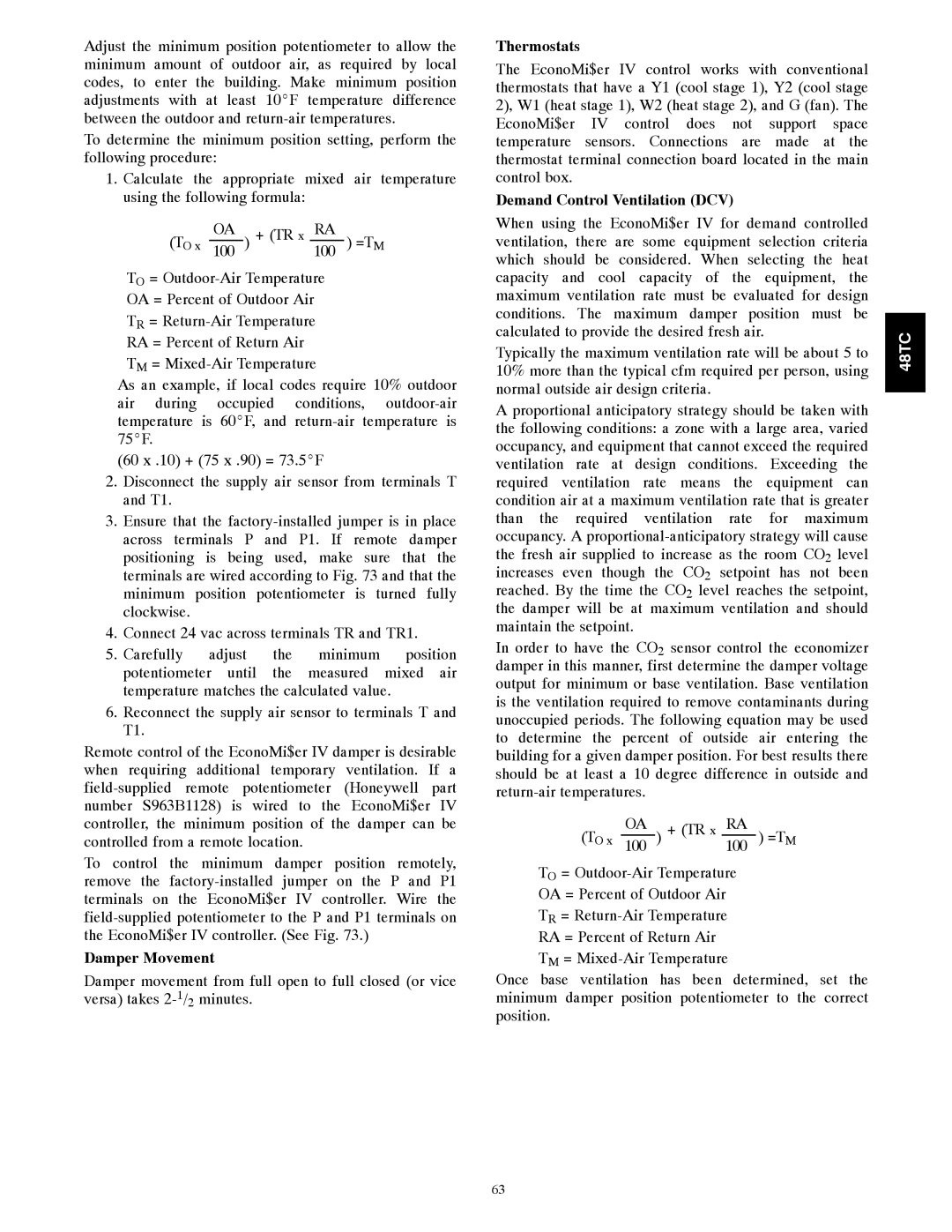
Adjust the minimum position potentiometer to allow the minimum amount of outdoor air, as required by local codes, to enter the building. Make minimum position adjustments with at least 10_F temperature difference between the outdoor and
To determine the minimum position setting, perform the following procedure:
1.Calculate the appropriate mixed air temperature using the following formula:
(TO x 100OA ) + (TR x 100RA ) =TM
TO =
OA = Percent of Outdoor Air
TR =
RA = Percent of Return Air
TM =
As an example, if local codes require 10% outdoor air during occupied conditions,
(60 x .10) + (75 x .90) = 73.5_F
2.Disconnect the supply air sensor from terminals T and T1.
3.Ensure that the
4.Connect 24 vac across terminals TR and TR1.
5.Carefully adjust the minimum position potentiometer until the measured mixed air temperature matches the calculated value.
6.Reconnect the supply air sensor to terminals T and T1.
Remote control of the EconoMi$er IV damper is desirable when requiring additional temporary ventilation. If a
To control the minimum damper position remotely, remove the
Damper Movement
Damper movement from full open to full closed (or vice versa) takes
Thermostats
The EconoMi$er IV control works with conventional thermostats that have a Y1 (cool stage 1), Y2 (cool stage 2), W1 (heat stage 1), W2 (heat stage 2), and G (fan). The EconoMi$er IV control does not support space temperature sensors. Connections are made at the thermostat terminal connection board located in the main control box.
Demand Control Ventilation (DCV)
When using the EconoMi$er IV for demand controlled ventilation, there are some equipment selection criteria which should be considered. When selecting the heat capacity and cool capacity of the equipment, the maximum ventilation rate must be evaluated for design conditions. The maximum damper position must be calculated to provide the desired fresh air.
Typically the maximum ventilation rate will be about 5 to 10% more than the typical cfm required per person, using normal outside air design criteria.
A proportional anticipatory strategy should be taken with the following conditions: a zone with a large area, varied occupancy, and equipment that cannot exceed the required ventilation rate at design conditions. Exceeding the required ventilation rate means the equipment can condition air at a maximum ventilation rate that is greater than the required ventilation rate for maximum occupancy. A
In order to have the CO2 sensor control the economizer damper in this manner, first determine the damper voltage output for minimum or base ventilation. Base ventilation is the ventilation required to remove contaminants during unoccupied periods. The following equation may be used to determine the percent of outside air entering the building for a given damper position. For best results there should be at least a 10 degree difference in outside and
(TO x 100OA ) + (TR x 100RA ) =TM
TO =
OA = Percent of Outdoor Air
TR =
RA = Percent of Return Air
TM =
Once base ventilation has been determined, set the minimum damper position potentiometer to the correct position.
48TC
63
